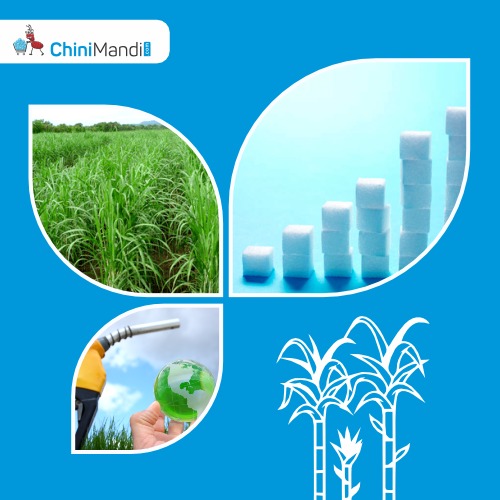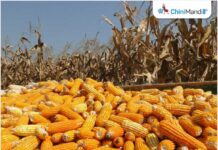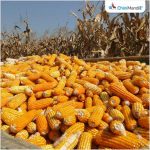Following are the major highlights of the activities of the sugar and ethanol industry during the year 2023:
The Indian sugar industry is a second largest agro-based industry that impacts rural livelihoods of about 5 crore sugarcane farmers & their families and around 5 lakh workers directly employed in the sugar factories. Employment is also generated in various activities relating to transport, trade servicing of machinery and supply of agriculture inputs. India is the largest producer as well as consumer of sugar in the world. Today, Indian sugar industry’s annual output is about ₹1,40,000 crore approximately.
There were 534 operational sugar factories in the country in sugar season 2022-23. Average annual production of sugarcane is now increased to about 5000 Lakh Metric Tonnes (LMT) which is inter-alia used to produce around 330 LMT of sugar after diverting about 43 LMT sugar for ethanol production. After meeting domestic consumption of about 280 LMT of sugar, 63 LMT sugar was exported during Sugar Season 2022-23.
As a result of pro-farmers measures taken by the Govt., about 99.9% of cane dues of previous sugar seasons have been cleared. For the sugar season 2022-23, against cane dues payable of Rs. 1,14,494 crores, about Rs. 1,12,829 crores have been paid & only Rs. 1,665 crore dues are to be paid. Thus, more than 98% cane dues have been paid to farmers resulting in lowest cane arrears pending.
Ethanol Blending Petrol Programme
Ethanol is an agro-based product which is used for blending with petrol as fuel and many other industrial uses including manufacturing hand sanitizers. It is produced from a by-product of the sugar industry, namely molasses as well as starchy food grains. In years of surplus production of sugarcane, when prices are depressed, the sugar industry is unable to make timely payment of cane price to farmers and to find a permanent solution to address the problem of excess sugar and improve the liquidity of sugar mills by helping them to clear their cane dues on time, Government is encouraging sugar mills to divert excess sugarcane to ethanol. Government of India has been implementing Ethanol Blended Petrol (EBP) Programme throughout the country wherein Oil Marketing Companies (OMCs) sell blended petrol. Under EBP Programme, Government has fixed the target of 20% blending of ethanol with petrol by 2025.
Till year 2014, ethanol distillation capacity of molasses-based distilleries was less than 200 crore litres. Supply of ethanol to OMCs was only 38 crore litres with blending levels of only 1.53 % in ethanol supply year (ESY) 2013-14. However, in past 9 years due to the policy changes made by the Government, the capacity of molasses-based distilleries has increased to 875 crore litres. Capacity of grain-based distilleries has increased to 505 crore litres.
During Ethanol Supply Year (Dec-Oct) 2022-23, 12% blending target was successfully achieved for which about 502 crore litres of ethanol was supplied for blending with petrol. Existing capacity of ethanol production in the country (as on 30.11.2023) has increased to 1380 crore litres (505 crore liters of grain based and 875 crore liters of molasses-based distilleries). Successful implementation of Ethanol Blended with Petrol (EBP) Programme has led to multiple benefits in various aspects:
Sale of ethanol has resulted in better cash flows for sugar mills resulting in prompt payment to cane farmers. In last 10 years (2014-15 to 2022-23), sugar mills have earned revenue of more than ₹ 90,000 crores from sale of ethanol which has added to the bottom line of sugar mills.
Production of ethanol has replaced imported petrol or crude oil which has resulted in saving of foreign exchange for India. In 2022-23, with production of about 502 crore litres of ethanol, India has saved about ₹ 24,300 crores of foreign exchange and improved India’s energy security.
Government of India is committed to meet its goals regarding reduction of emissions of Green House Gases (GHGs). Use of ethanol blended petrol reduced emission of Carbon Mono Oxide by about 30-50% and other hydrocarbons by about 20%. In fact, increasing use of ethanol in transportation will switch Indian transportation sector to be greener and environment friendly.
As a result of this effective government policy, investment opportunities worth over ₹ 40,000/- crore emerged, leading to the establishment of new distilleries in rural areas and contributing to direct and indirect employment generation of about 60,000 in those regions. It is expected that by 2025-26, more than one lakh employment opportunities would be created in the form of direct and indirect employment.
Digitization in Sugar Sector
To promote ease of doing business, bringing transparency and to facilitate sugar mills, DFPD in collaboration with Invest India to automate various regular activities of DSVO. To have complete and integrated digitization of the whole system as well as to have all the relevant data of sugar mills and ethanol industry at one place, a dedicated portal has been developed on NSWS portal.
Progress so far on NSWS portal:
All the sugar mills have been registered on NSWS portal.
MIS Formats has been developed on NSWS portal.
Sugar mills have started filling data on NSWS portal.
The data for monthly release is being taken for all sugar mills from NSWS portal.
Appointment of Nodal officer at state level to access the forms filled by sugar mills and generate MIS reports.
(Source: PIB)












